
LIMO
Lunar
Imaging Module & Observatory


|
LIMO
Lunar
Imaging Module & Observatory
|

|
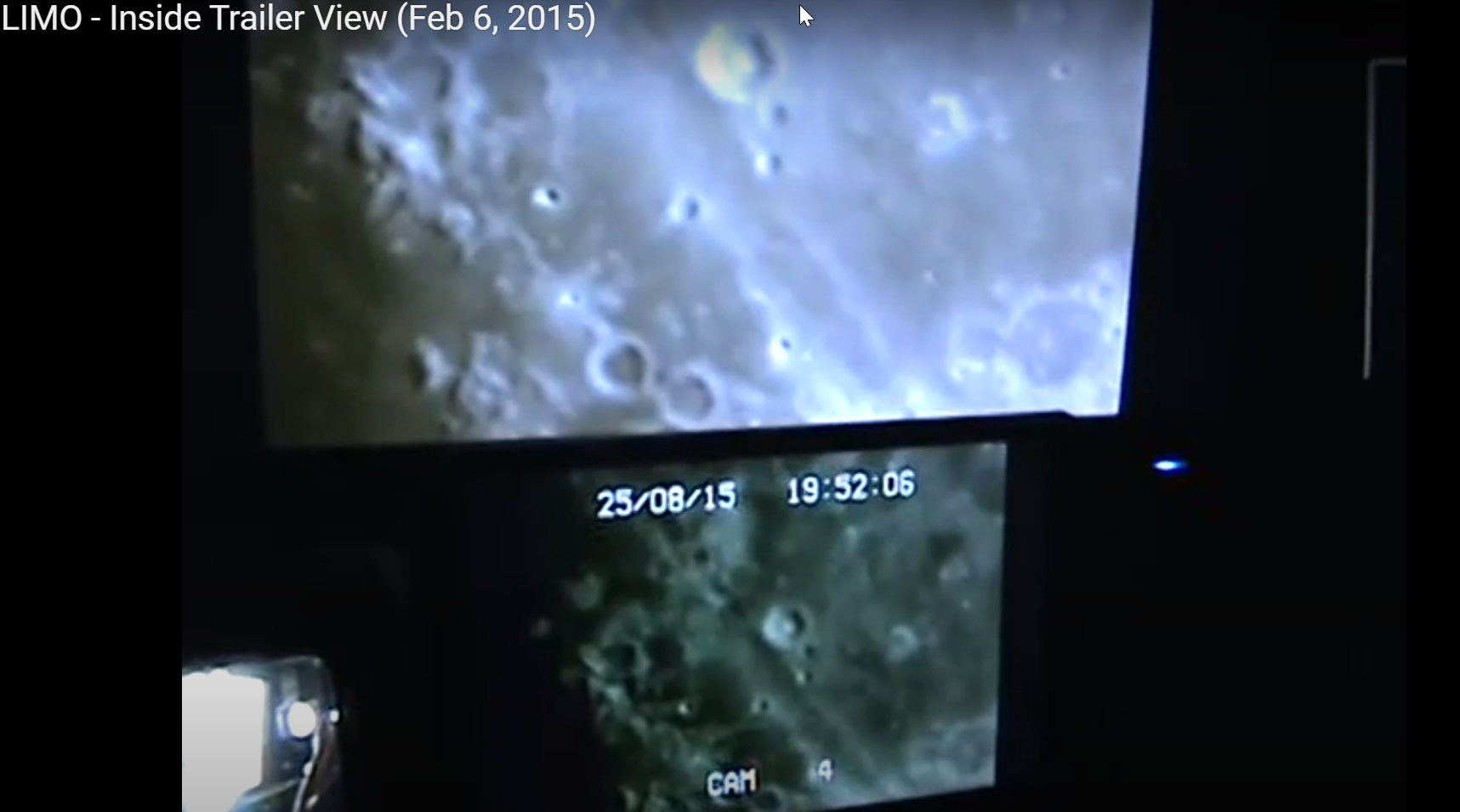
|
Updated: 14 Oct 2020
The main monitor displaying the SSI
camera view of the lunar surface was a 42" HD LCD. The
smaller monitor just below it was what we called the
"Quad Select, which showed which camera (1,2,3, or 4)
was displayed and recorded for some reason. There are
other monitors not shown here, one being the SkyGlobe
star & moon position display.
The LIMO sessions began with mission 78 on
29 August 2014, and ended with mission 95 on 22
October 2015, a total of 17 missions. All of them were
conducted with the SSI camera.
|
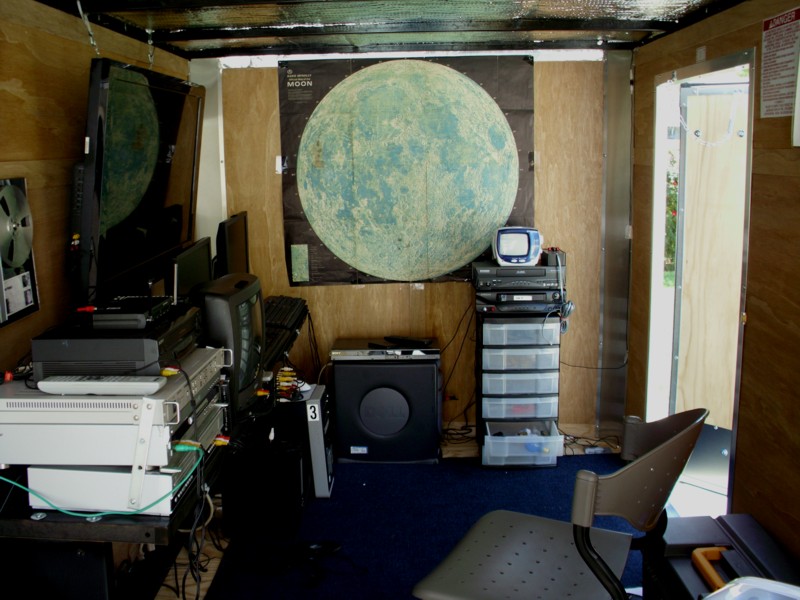 Fig. 2
|
 |
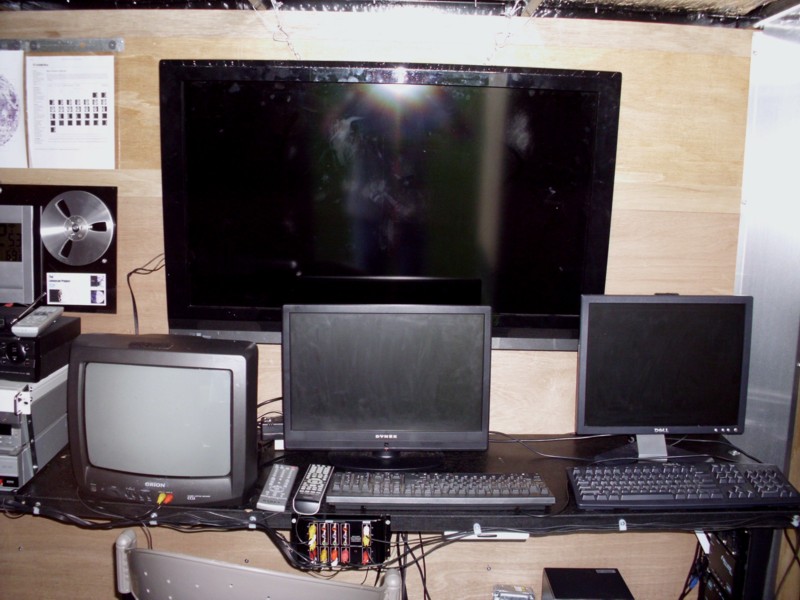 Fig. 4
|
| Fig. 2 is a shot from the big double doors at the back of the 8'x10' trailer. On the left is the instrument console. All the way back at the front of the trailer is rack 2 with the data recorders and parts drawers. Fig. 2 is the view from the side door during a mission showing the wall above the console. A better view of the console can be seen in Fig. 4. Not powered up here but shown for identification are (front row, left to right): the quad monitor, the Quad-Select monitor, and then the SkyGlobe computer monitor. |

| Fig.
5 is the
compact Schmidt-Cassegrain telescope, an 8" f/10
with a 2032 mm focal length on a custom-designed
Tech 2000 DOB Driver II computer-driven Dobsonian
mount. It is the same scope and mount used in
the TCCM Series. |

Fig. 6. Upper 30" turret.
|
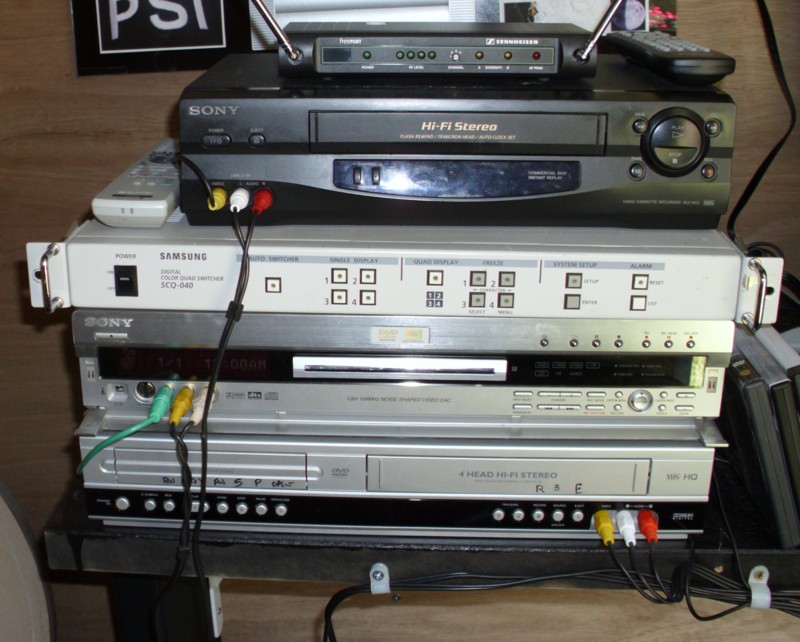 Fig. 7 Rack 1 Electronics. |
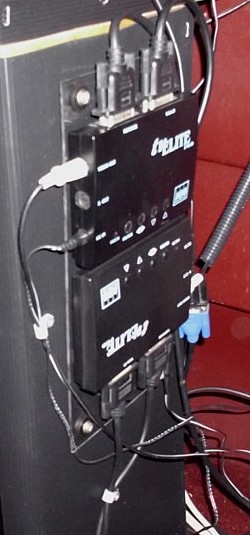
Fig. 8 Digital to analog
converters.
|
| Fig.
6 is the 30" upper turret for the Tech 2000 DOB Driver
II computer system, also used in the TCCM Series. Also
shown are the computer and the hand control. Fig. 7 is
the rack 1 electronics section with the Sennheiser receiver, picking
up the the WWV time signal from the transmitter in the
lab, the quad processor, the DVR, and a VHS recorder.
Fig. 8 shows two digital to analog converters needed
to display computer images on the Quad
processor. |
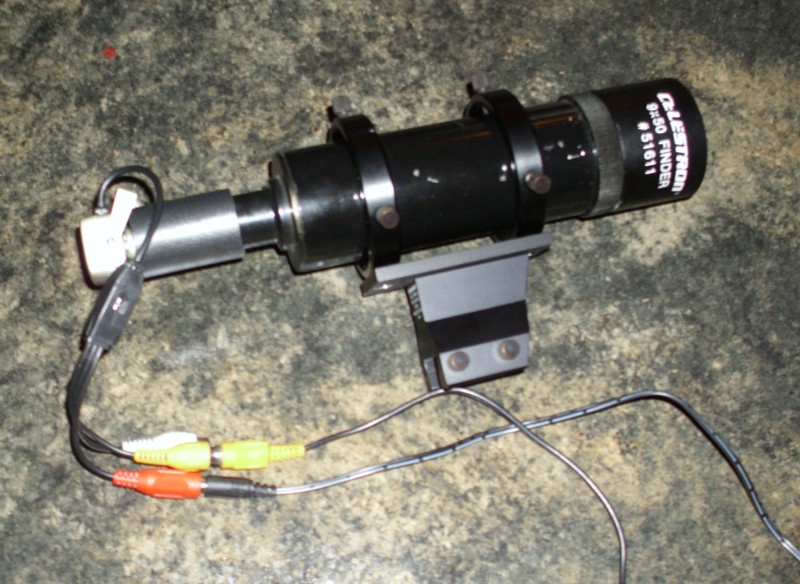
Fig. 9
Findercam with miniature video camera |
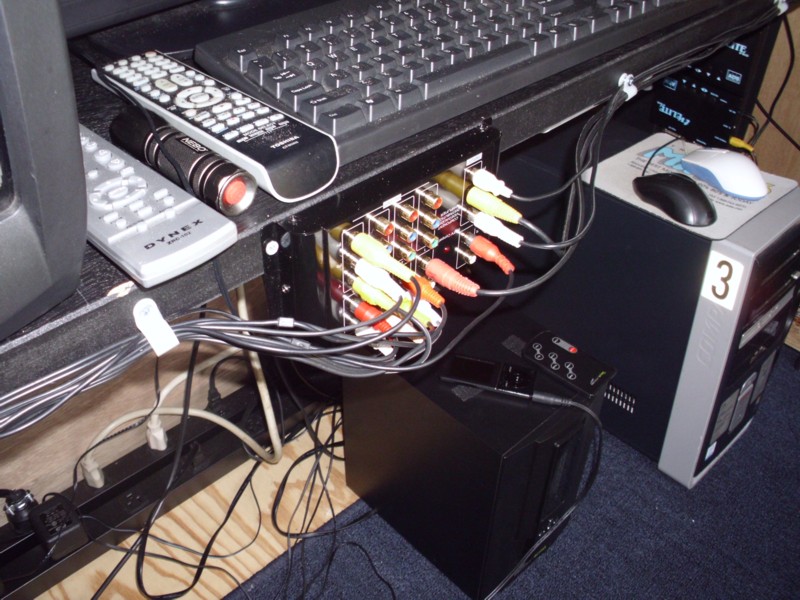 Fig. 10 The powered audio/video panel |
 Fig. 11
Two of the computers used. |
| The Findercam in Fig. 9 had a miniature video camera with a video feed to camera 1 on the Quad so the scope could be guided using its crosshairs. The target area could be found very quickly and maintained easily during the mission. All audio and video signals were controlled and amplified using the A/V panel shown in Fig. 10. Fig. 11 shows two of the five computers used. The Tech 2000 DOB Driver-II computers was unlike the towers shown and can be seen in Fig. 6. (red) |
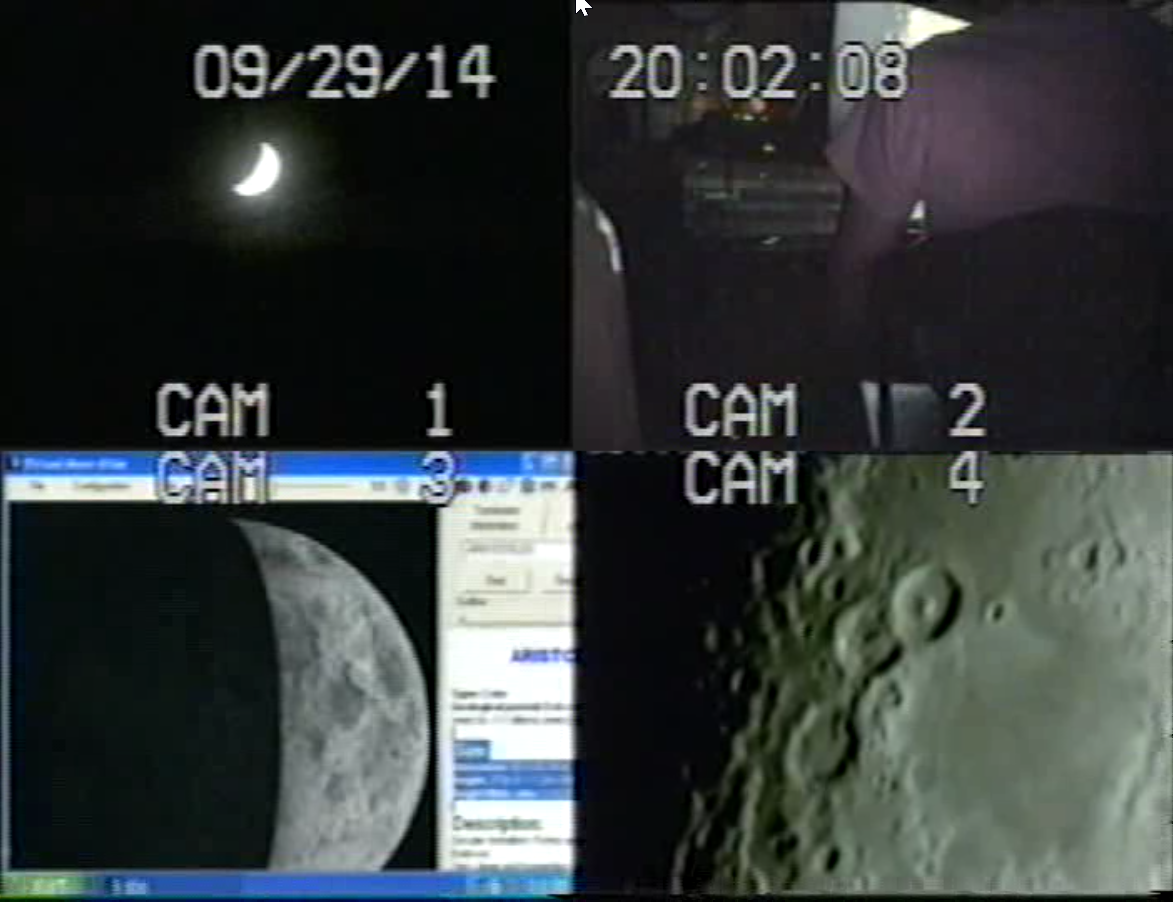
| Quad Monitor view showing Findercam on cam 1 position, Cabcam on cam 2, VMA graphics on cam 3 and the live camera view from the SSI camera on cam 4. |
| The
LIMO missions were the end of the 20-year scanning
portion of the Lunascan Project, a total of 95
missions for all three imaging systems, beginning with
the STU and the TCCM. Hundreds of VHS recordings were
made which included all 95 missions, some involving
additional 2 hour recordings during clear sky and
favorable conditions where sessions were extended.
Some of the later sessions involved recordings of cab
cameras, quad processor images, etc. The non-scanning projects that were also underway from the first day of the project continue to this day, and includes the discovery of the anomalies in Paracelsus C in June of 2016 and our hopes of getting a NASA or ESA mission to put a lander there as soon as possible. |